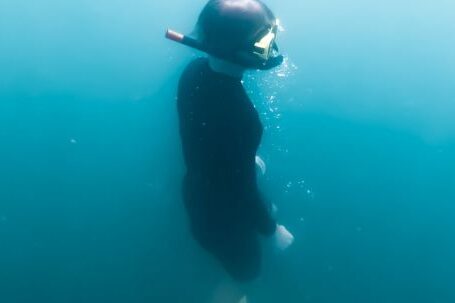Introduction:
Decompression is a critical process in deep-water diving that allows divers to safely return to the surface without experiencing decompression sickness. While traditional decompression procedures have been effective, advancements in technology and research have led to the development of advanced techniques that offer even greater safety and efficiency. In this article, we will explore some of these advanced techniques for deep-water decompression.
The Importance of Deep-water Decompression:
Deep-water diving involves exposing the body to increased pressure, which can cause the absorption of higher amounts of nitrogen into the tissues. If divers ascend too quickly, the rapid decrease in pressure can result in the formation of nitrogen bubbles in the bloodstream, leading to decompression sickness. Therefore, proper decompression techniques are vital to ensure the well-being of divers.
Gradient Factors and Dive Computers:
Traditionally, decompression tables have been used to calculate decompression stops based on the depth and duration of the dive. However, advanced techniques now utilize gradient factors and dive computers to provide more accurate and personalized decompression profiles. Gradient factors take into account individual factors, such as age, fitness level, and previous dive history, to calculate a safer decompression plan. Dive computers, equipped with advanced algorithms, continuously monitor the diver’s depth and time, adjusting the decompression stops accordingly.
Oxygen and Helium Mixtures:
Another advanced technique for deep-water decompression involves the use of oxygen and helium mixtures during the ascent. These mixtures, known as trimix gases, replace some of the nitrogen in the breathing gas with helium. Helium has a lower density and diffusivity than nitrogen, allowing for faster elimination from the body. By reducing the amount of nitrogen absorbed during the dive, divers can shorten their decompression times and minimize the risk of decompression sickness.
Saturation Diving:
Saturation diving is an advanced technique used for extended periods of deep-water operations. Instead of ascending to the surface after each dive, saturation divers live in a pressurized environment called a saturation system. This system allows divers to remain at a constant depth for several days or weeks. During this time, the body becomes saturated with inert gases, eliminating the need for repetitive decompression. When the operation is complete, the divers undergo a single decompression period before returning to the surface.
Hyperbaric Chambers:
In cases where divers experience symptoms of decompression sickness, hyperbaric chambers are utilized for treatment. Hyperbaric chambers simulate the increased pressure experienced during a dive, allowing the body to eliminate nitrogen bubbles more effectively. Additionally, hyperbaric oxygen therapy can be administered to further accelerate the process of nitrogen elimination and promote healing.
Conclusion:
Advanced techniques for deep-water decompression have revolutionized the safety and efficiency of diving operations. Gradient factors and dive computers provide personalized decompression profiles, minimizing the risk of decompression sickness. Oxygen and helium mixtures reduce the absorption of nitrogen, allowing for faster and safer decompression. Saturation diving eliminates the need for repetitive decompression, enabling extended periods of deep-water operations. And hyperbaric chambers offer effective treatment for decompression sickness. By staying informed and utilizing these advanced techniques, divers can explore the depths of the ocean with greater confidence and security.





